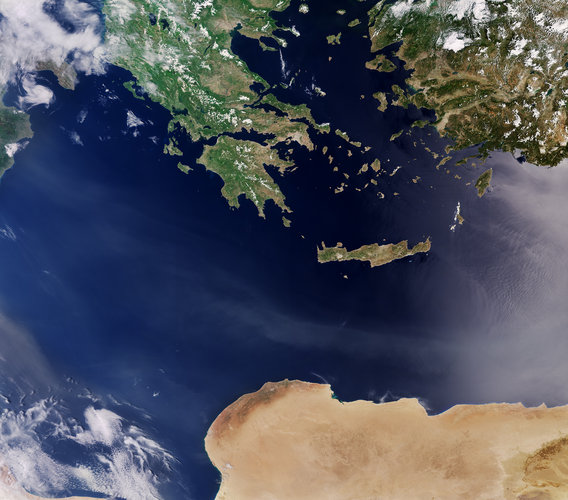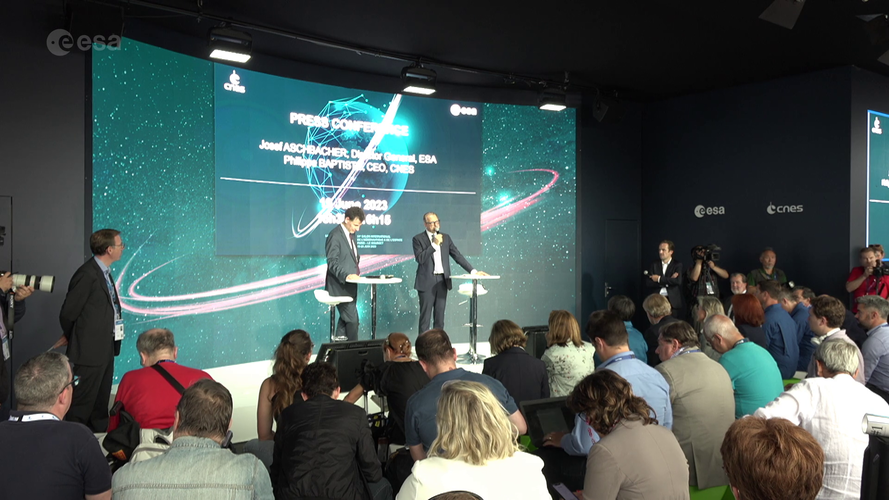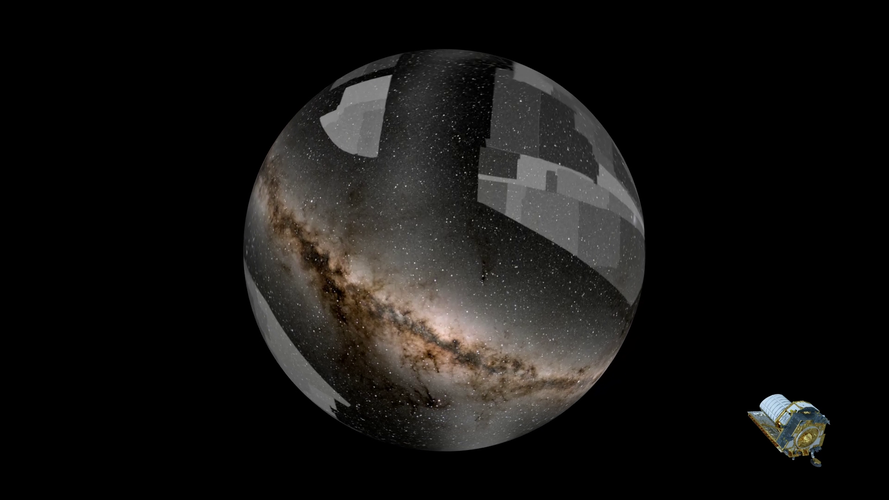
Copernical Team
Webb Rules Out Thick Carbon Dioxide Atmosphere for Rocky Exoplanet
 Greenbelt MD (SPX) Jun 20, 2023
An international team of researchers has used NASA's James Webb Space Telescope to calculate the amount of heat energy coming from the rocky exoplanet TRAPPIST-1 c. The result suggests that the planet's atmosphere - if it exists at all - is extremely thin.
With a dayside temperature of roughly 380 kelvins (about 225 degrees Fahrenheit), TRAPPIST-1 c is now
Greenbelt MD (SPX) Jun 20, 2023
An international team of researchers has used NASA's James Webb Space Telescope to calculate the amount of heat energy coming from the rocky exoplanet TRAPPIST-1 c. The result suggests that the planet's atmosphere - if it exists at all - is extremely thin.
With a dayside temperature of roughly 380 kelvins (about 225 degrees Fahrenheit), TRAPPIST-1 c is now Rocket Lab debuts HASTE with suborbital launch from Wallops Island
 Rocket Lab USA, Inc. (Nasdaq: RKLB) has launched its first suborbital testbed launch vehicle, called HASTE (Hypersonic Accelerator Suborbital Test Electron) for a confidential customer. The inaugural launch took place on June 17 at 21:24 Eastern local time (June 18, 01:24 UTC) from Rocket Lab's Launch Complex 2 at Virginia's Mid-Atlantic Regional Spaceport within NASA's Wallops Flight Facility.
Rocket Lab USA, Inc. (Nasdaq: RKLB) has launched its first suborbital testbed launch vehicle, called HASTE (Hypersonic Accelerator Suborbital Test Electron) for a confidential customer. The inaugural launch took place on June 17 at 21:24 Eastern local time (June 18, 01:24 UTC) from Rocket Lab's Launch Complex 2 at Virginia's Mid-Atlantic Regional Spaceport within NASA's Wallops Flight Facility. Euclid fuelled for launch

ESA’s Euclid gets fuelled inside an Astrotech facility near Cape Canaveral in Florida (USA) ahead of its launch on a SpaceX Falcon 9.
ESA backs Greek firms’ and universities’ CubeSats

Seven CubeSat missions that demonstrate a variety of services including connectivity and secure communications are being developed by small and medium-sized companies and universities in Greece, following an open call and selection by ESA.
Paris Air Show Live - ESA/CNES Kick-off Press conference
 Video:
00:49:44
Video:
00:49:44
The Paris Air Show is one the oldest and largest aerospace event in the world and of course ESA is there!
Watch the replay of the kickoff press conference attended by ESA Director General Josef Aschbacher and CNES CEO Philippe Baptiste. ESA astronauts Thomas Pesquet, Samantha Cristoforetti and Matthias Maurer as well as further ESA Directors are also present.
New Space companies join Copernicus

With commercial companies playing an increasingly important role in creating a dynamic and innovative space industry, nine New Space satellite data suppliers have joined the Copernicus programme as ‘Contributing Missions’. Today, at the Le Bourget Paris Air Show, ESA and the European Commission further embraced the era of New Space by welcoming these nine companies into the fold and celebrating the contribution they will make in monitoring our changing world.
Euclid: ESA’s mission into the unknown
 Video:
00:03:29
Video:
00:03:29
ESA’s Euclid mission is designed to bring the dark side of the Universe to light. Based on the way galaxies rotate and orbit one another, and the way in which the Universe is expanding, astronomers believe that two unseen entities dominate the composition of our cosmos. They call these mysterious components dark matter and dark energy, yet to date we have not been able to detect either of them directly, only inferring their presence from the effects they have on the Universe at large.
To better understand what dark matter and dark energy may be, we need a
SpaceX launches satellite to serve rural Indonesia
 SpaceX launched a Falcon 9 rocket Sunday carrying a communications satellite that will provide internet service to Indonesia.
The rocket launched from Space Launch Complex 40 at Cape Canaveral Space Force Station in Florida. The launch window opened at 6:04 p.m. but liftoff was delayed by about 15 minutes due to upper level winds. A backup window was prepared for Monday.
The rock
SpaceX launched a Falcon 9 rocket Sunday carrying a communications satellite that will provide internet service to Indonesia.
The rocket launched from Space Launch Complex 40 at Cape Canaveral Space Force Station in Florida. The launch window opened at 6:04 p.m. but liftoff was delayed by about 15 minutes due to upper level winds. A backup window was prepared for Monday.
The rock Shining potential of missing atoms
 Single photons have applications in quantum computation, information networks, and sensors, and these can be emitted by defects in the atomically thin insulator hexagonal boron nitride (hBN). Missing nitrogen atoms have been suggested to be the atomic structure responsible for this activity, but it is difficult to controllably remove them. A team at the Faculty of Physics of the University of Vi
Single photons have applications in quantum computation, information networks, and sensors, and these can be emitted by defects in the atomically thin insulator hexagonal boron nitride (hBN). Missing nitrogen atoms have been suggested to be the atomic structure responsible for this activity, but it is difficult to controllably remove them. A team at the Faculty of Physics of the University of Vi 
